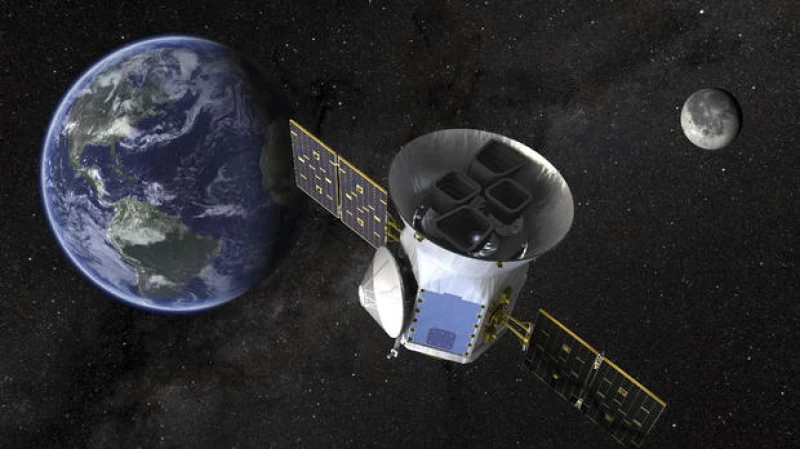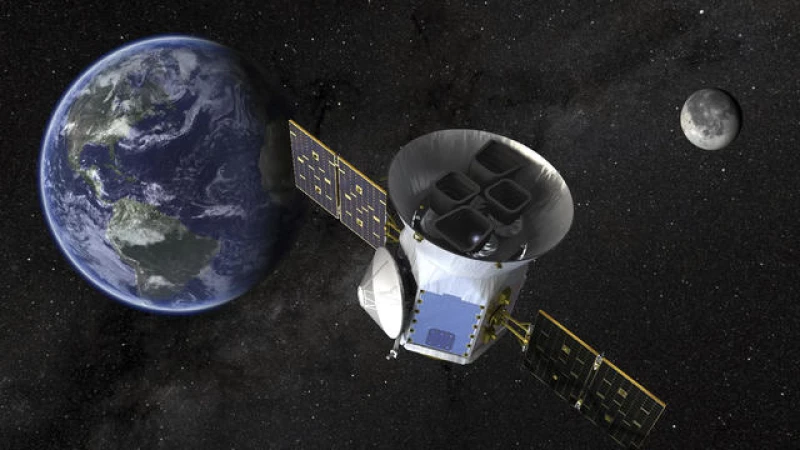Rare In-Sync Solar System Discovered
Astronomers have discovered a rare in-sync solar system with six planets moving like a grand cosmic orchestra, untouched by outside forces since their birth billions of years ago.
The find, announced Wednesday, can help explain how solar systems across the Milky Way galaxy came to be. This one is 100 light-years away in the constellation Coma Berenices. A light-year is 5.8 trillion miles. A pair of planet-hunting satellites — NASA's Tess and the European Space Agency's Cheops — teamed up for the observations that discovered the solar system.
Derrick Pitts, the chief astronomer at Philadelphia's Franklin Institute, told CBS News that the planets are a rare example of how researchers "think solar systems are born."
"The planets are in perfect synchronous orbit with each other ... We're looking at what a solar system may have looked like billions of years ago, even what our solar system may have looked like billions of years ago," Pitts said.
None of the planets in perfect synchrony are within the star's so-called habitable zone, which means little if any likelihood of life, at least as we know it.
"We have discovered a remarkable target for comparison," stated Adrien Leleu, a researcher from the University of Geneva. Leleu was part of an international team that recently published their findings in the prestigious journal Nature.
According to Pitts, the untouched nature of this solar system provides a unique opportunity for scientists to gain insights into the formation of our own solar system.
"Studying a solar system like ours and engaging in what I call forensic astronomy allows us to look back in time and understand the dynamic conditions that shaped our early solar system. In the beginning, our solar system was incredibly active and looked completely different from what it does now," Pitts explained. "By examining synchronized planetary systems like this one, we hope to unravel the mysteries of how our solar system evolved."
This star may have more planets
This star, known as HD 110067, may have even more planets. The six found so far are roughly two to three times the size of Earth, but with densities closer to the gas giants in our own solar system. Pitts said most of the planets are smaller than Neptune. Their orbits range from nine to 54 days, putting them closer to their star than Venus is to the sun and making them exceedingly hot.
As gas planets, they're believed to have solid cores made of rock, metal or ice, enveloped by thick layers of hydrogen, according to the scientists. More observations are needed to determine what's in their atmospheres.

This solar system is unique because all six planets move similar to a perfectly synchronized symphony, scientists said. In technical terms, it's known as resonance that's "precise, very orderly," said co-author Enric Palle of the Institute of Astrophysics of the Canary Islands.
The innermost planet completes three orbits for every two by its closest neighbor. It's the same for the second- and third-closest planets, and the third- and fourth-closest planets.
The two outermost planets complete an orbit in 41 and 54.7 days, resulting in four orbits for every three. The innermost planet, meanwhile, completes six orbits in exactly the time the outermost completes one.
All solar systems, including our own, are thought to have started out like this one, according to the scientists. But it's estimated only 1 in 100 systems have retained that synchrony, and ours isn't one of them. Giant planets can throw things off-kilter. So can meteor bombardments, close encounters with neighboring stars and other disturbances.
According to Palle, astronomers have discovered a solar system with an unprecedented number of planets in perfect synchronization and orbiting around a bright star. This particular star system has more planets in harmony than any other known system.
The team of researchers, including Hugh Osborn from the University of Bern, were pleasantly surprised when they found that the orbital periods of the planets aligned closely with their predictions. Osborn described this discovery as shocking and delightful, stating that he was left in awe.







